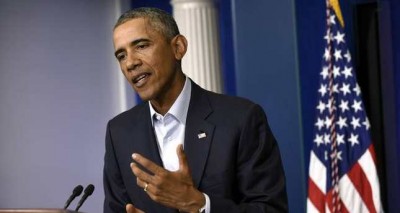Quagmires and Permanent Occupations: Obama’s Afghan Reversal

If the invaders lost the war in Afghanistan with the presence of hundreds of thousands of troops, their hopes of reversing the tide with five thousand troops are also misguided. Taliban statement, Voice of Jihad, Oct 16, 2015
However anything scribbled about the Taliban’s durability is titled, the substance is the same: Afghanistan, whatever or whoever the resistance might be, remains a reliquary of failed imperial projects. Super powers have gone there to bleed and wither; social projects have been implemented only to perish in barren soil. Counter-insurgency scholars and specialists have been shown up time and time again as retained charlatans.
This is not the message the Obama administration wishes to give. In the last legs of his administration, the president is keen to make sure that the US will not leave the Afghanistan with a bloodied nose.
The reality on the ground suggests that the US-led presence is one of boxing in the wind, a series of futile gestures that merely seek to prolong the inevitable. The Taliban’s “footprint”, as analyst like to call it with euphemistic restraint, has proven so difficult to remove, their presence has been normalised. Their footprints, in fact, are conspicuous across the country, getting bigger and more pronounced over time.
Bill Roggio of The Long War Journal has shown that one-fifth of the country is either under Taliban control or contested by the group, a figure he admits is an under estimation of worth. Extrapolating this further, Roggio suggests that the Taliban, in actual fact, “probably either control or heavily influence about a half of the country.”[1]
According to the LWJ editors, the data “understates the Taliban’s influence in areas of Afghanistan, particularly in the east and south, as we are using open source reports to determine a district’s status.”[2]
The stuttered, and one might even say ineffectual, US presence has been further confused by a revised timetable for lengthier withdrawal. Currently, the garrison numbers 9,800 troops, a presence that was deemed inadequate to mount a viable, prolonged counter-insurgency strategy. The fall of Kunduz for two weeks to the Taliban last month, along with dozens of other districts has certainly made a mockery of the US role. It has also terrified US-sponsored satraps.
On October 15, Obama decided to retain 5,500 troops to the end of his term, stationed at Kabul, Bagram, Nangarhar and Kandahar using language suggesting permanent occupation. “I will not allow Afghanistan to be used as safe haven for terrorists to attack our nation again.” They will continue to bolster the dysfunctional, precariously positioned government of Ashraf Ghani, which appears to be a model of anti-governance and institutionalised theft.
Retired general Atiquallah Amarkhil could only express relief about the announcement, calling it “an important boost to the Afghan army morale [showing] that the world is not leaving them alone.” But the very sponsorship of such an entity adds succour to the Taliban cause. A fanatic’s certainty might be troubling, but in some cases reassuring when weighed against disingenuous colonialists and self-serving police officials.
Given that the Ghani-Abdullah “unity” government was only ever a bandaid solution designed to avert total chaos till the grand assembly (loya jirga) ironed out a better option, the entire operation reeks of borrowed time.
Such a situation leads to two options. Either the US gives up the ghost – actually, truly, meaningfully – and beats a retreat from an area it has shown no capacity to police let alone occupy; or embrace the colonising devil with full conviction.
Even conservative commentators of the war mongering inclination are sceptical that Washington’s imperial credentials are up to the task. Staying power, argues Niall Ferguson, has always been a US problem when it comes to imperial projects. Its brand of democracy tends to spoil on route, as does its messianic mission. It is hardly coincidental to see that US administration too often becomes a matter of drone strikes and judicial assassination rather than durable governance. The former is so much easier.
The LWJ crew, on the other hand, simply resort to the game of numbers and garrisons – the more, the merrier. Living up to the name of their publication, the long war should simply be made longer, with greater numbers of personnel. “We argue that this force [of 5,500] is insufficient to halt the Taliban’s advance.”
The Taliban statement conveyed through the Islamic Emirate of Afghanistan on its Voice of Jihad has a far more coherent, and convincing line. It even mocks the Pentagon’s own projections of worth, being dismissive of the 5,500 number. “Insisting upon war and occupation will further reduce the support America enjoys around the world and with the American people themselves.”
Then, a fateful reminder. “America will get entangled in the war inside Afghanistan all by herself such that her fate shall be similar to that of the Soviet Union.”[3] While it is unlikely that the US will unravel and suffer an internal implosion because of its Afghanistan misadventure, the Jihadists may be entitled to gloat just a tad. While they do so, they will be witnessing a factionalised Afghan government that has been appropriately dismissed as being one of “one truck, two drivers.”
Dr. Binoy Kampmark was a Commonwealth Scholar at Selwyn College, Cambridge. He lectures at RMIT University, Melbourne. Email: [email protected]
Notes

